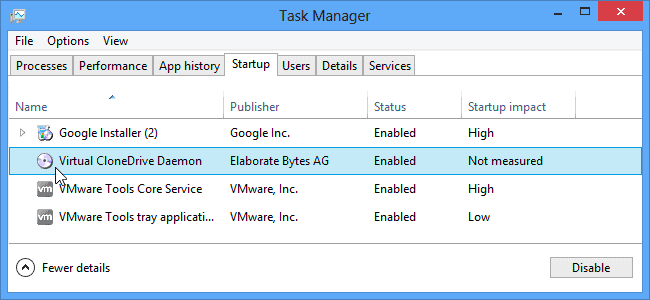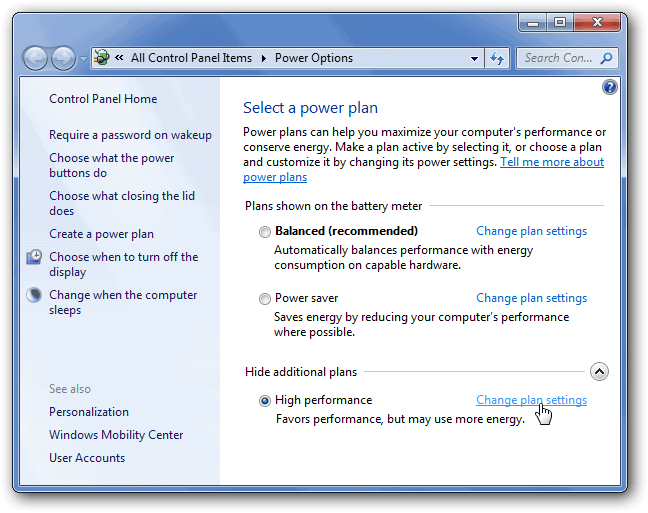Over time computers slow down. One of the best ways to get a speed boost is with new hardware; replacing a mechanical internal hard drive with a Solid-State Disk (SSD) will certainly give you a noticeable improvement in performance and won’t break the bank as prices have come down considerably, a 2TB drive can now be picked up for way below £100.
A hybrid drive could also be a cost effective option. These combine a large amount of traditional storage with a small, speedy flash storage cache which gives you SSD-like speed for your most frequently used files. However, you will have to fit it and transfer files over so there is time and expertise to factor in.
RAM is another cost-efficient upgrade and will help with multitasking, whilst you could also upgrade your CPU. If you’re feeling flush you could buy a brand-new machine; technological advances mean that newer is often better.
But if you don’t want to spend any money there are some fairly simple things you can do to give you an improvement in speed. And you don’t need to be a computer expert to do it. These tips are specifically for machines running Windows 10 but most will work on Windows 11 too.
Restart Your PC
It could really be that simple. We wrote a previous post on why simply turning it off and back on again can cure PC faults and if your PC is running slowly then a simple reboot might be all you need to get things working smoothly again.
You also need to remember that shutting down the computer is not the same as restarting it. In Windows 10 Fast Startup saves a snapshot of your PC and processes in something called a ‘hiberfile’ which enables faster boot-up. So, if you have Fast Startup enabled then turning the PC off is the only way to fully clear the memory.
Enable Fast Startup
Speaking of Fast Startup if you’re suffering with a sluggish startup on a Windows 10 machine then this feature can make a world of difference. Fast Startup is like a combination of the hibernation and shutdown processes. Similar to hibernation the state of the machine is saved on the hard drive but it only includes the basic services, the Windows Kernal and drivers, that load on startup so your apps are closed down. On startup Windows then loads the kernel and drivers from the hibernation file, which speeds up boot times.
Here’s how to turn it on:
- Right-click the Start button and select Power Options from the menu that appears.
- Click “Additional power settings” on the right side of the screen.
- Click “Choose what the Power buttons do.”
- From the screen that appears, click “Change Settings that are currently unavailable.”
- On the screen that appears, check the box next to “Turn on fast startup (recommended).”
- Click “Save changes.”
On some machines Fast Startup isn’t enabled. If that’s the case with your machine then you won’t see the “Turn on Fast Startup (recommended)” entry.
Run Disk Cleanup
This will free up space on your hard drive AND increase performance. Disk clean up has been a feature of Windows forever and is a really useful utility which helps you to clear out temporary files, installers and various other files littering your hard drive. In Windows 10 Disk Cleanup has a further use.
If you’ve upgraded to Windows 10 or downloaded a recent update then Windows 10 will have kept the earlier version of the operating system, just in case you want to go back to it. If you’ve been using Windows 10 for a while and you’re happy with it then removing the old version can be a real space saver. You can delete the old version via the Disk Cleanup utility.
- Run the tool by typing Disk Cleanup in the search bar and clicking the desktop app that appears.
- Click the ‘Clean Up System Files’ button and the utility will calculate how much space you will be able to free up.
- Scroll down the list and select the files you’re happy to have deleted including your previous Windows installations.
Just make sure you don’t delete anything that you need!

Delete Bloatware
Many PC’s come pre-loaded with ‘useful’ software from the manufacturer. These programs are termed bloatware and take up hard drive space and slow down your system. You can use 3rd Party tools such as the wonderfully named PCDecrapifier, Should I Remove It or Slim Computer which all do a good job but you can get rid of a lot of these programs, alongside programs that you’ve installed yourself and have found that you don’t use, via the Control Panel. To access, type control panel in the search bar and select uninstall a program. You’ll be presented with a list of everything that’s installed on your machine. To remove a program simply select the programs you want to remove and select uninstall. You may need to restart your machine in order to complete the uninstall.
Disable Startup Programs
One issue that can slow down your PC is the number of programs running in the background. Some of these can be programs you rarely or never use, but are loading at startup. If you stop these programs from running you’ll get a performance boost.
To stop programs loading at startup use the Task Manager. You can start this by pressing ctrl-shift-esc or by right clicking the start menu window icon. If the Task Manager has only one tab click ‘More Details’ and you’ll get access to all the other tabs.
Now click the startup tab and you’ll see a list of all of the programs that are currently launching when you start windows. The list includes the program name, whether it’s enabled to run and it’s startup ‘impact’ – this tells you how much of a detrimental effect the program has on Windows performance.
To stop a program or service from launching at startup simply right click it and select disable. This doesn’t remove the program or disable it completely, it just stops it launching every time you start the PC. You can still start the program later if you want to. The process is also reversible so if you decide you do want a program to launch after all you can simply enable it again.
Many of the programs will be instantly recognisable, however, if there are any you don’t recognise then you can search for further information direct from Task Manager. Simply right-click and select ‘search online’. If you are really unsure about a listed application then the guys at Should I Remove It have a free service called ‘Should I Block It’ where you can search for the file name and usually find pretty useful information about the application and whether you need to disable it.

Change Your Power Settings
If you are using Windows 10 power-saver plan on your PC, you are slowing it down. The purpose of that plan is to reduce PC performance in order to save energy – useful for laptops but not such an issue for your desktop. Changing your power plan from power saver to high-performance or balanced will give you an instant boost.
To change your power setting launch the control panel and then select Hardware and Sound then power options. Generally, you’ll see a couple of options: balanced (recommended) and power saver. To see the high-performance setting you’ll need to click the down arrow next to ‘Show Additional Plans’.
To change the setting simply choose the one you want and then exit control panel. The different setting are pretty much as described; high performance uses the most power but gives you the fastest performance possible, power saver throttles performance to save power and balanced sits somewhere between the two. There is no real reason for a desktop user to select power saver and even laptop users should consider balanced and then switch to high performance when they are plugged in.

There are a number of other things you can do which will have an effect on your computers speed. These range in complexity and effect and can require some third-party software. The tips we’ve given are straight forward and should give a sluggish machine a noticeable boost. However, these tips do come with a health warning. If you are removing programs make sure you are certain that they are not needed. Sometimes one program might need another to work. If you’re unsure check. Google is really helpful or ask your IT Support Provider – they’d rather advise you before you cause a problem than try and solve it afterwards!
If you’ve tried these tips and things are still running at snail pace then it might be time to call in the experts. Give us a call on 0115 7980704 or email info@your-itdepartment.co.uk for a no obligation conversation.

